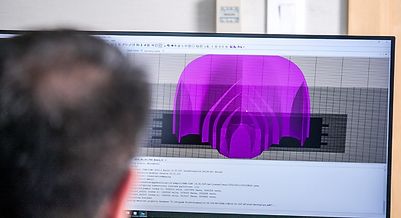
Computational Fluid Dynamics
The Art of the Possible
PacMar Technologies is a leader in computational fluid dynamics and physics-based motion simulation and optimization.
Engineering Expertise:
-
Advanced Seakeeping & CFD Analysis
-
Engineering Development from TRL1 to TRL6
-
Hydro-Mechanical Simulation
-
Concept Design
-
Mechanical Systems Design
-
Amphibious Vehicles
-
Uncrewed Refueling
-
Remote Vessel Operation
-
Undersea Vehicle Design
Case Study with AppliedCAx
Building prototypes to validate designs is costly and limits innovation. PacMar Technologies has created virtual sea states in which we can simulate and optimize design iterations before constructing physical prototypes and testing in real-world conditions. We utilize advanced simulation tools STAR-CCM+ and our in-house code AEGIR in the product development cycle to validate product designs.
Developing the Next Generation of Aquatic Vessels
As a company, PacMar Technologies prides itself on tackling tough challenges and being able to take an idea from a napkin sketch to a detailed design and simulation, then finally constructing and delivering a fully functional physical prototype that goes to the sea for in-water testing. Our Honolulu location offers an optimal setting for real-world validation as the challenging sea state and uniquely rough waters makes for a dynamic testing ground. Designs that can perform here can perform anywhere.


Designing for the Rigors of the Ocean
The ocean is an unforgiving environment, and the main challenge of maritime design is the sea itself. Watercraft designs and prototypes taken to the sea must be ready for those challenges and be able to overcome the dynamics of a harsh, deep ocean environment. Surface vessels, underwater vehicles, as well as amphibious vehicles, all have to deal with waves, the surf zone, currents, and wind, all coming together in an incompressible fluid - whether it's on the surface or below.


Innovative Success Powered by Simulation
PacMar Technologies has had many successful surface ship programs in its history. Oneof the most successful has been their Sea Blade line of surface ships. Novel in its approach to hydrodynamics and performance, they leveraged STAR-CCM+ to run simulations on "many, many" iterations, doing different benchmark comparisons against different hull designs.
The most comparable hull ship is a Deep-V hull design. Looking at the Sea Blade vs the Deep-V, they showed a 23% reduction in slamming and a 50% reduction in roll response. They're also able to go up an additional 2 knots in speed. These are key metrics for operator safety, allowing the operator to not only go faster but also avoid injuring crew and damaging machinery or electronics.
These designs would not be possible without having access to simulation. Without the reduction in risk, the cost of developing cutting-edge technologies would not have been possible.
Read more about the Sea Blade project here.


